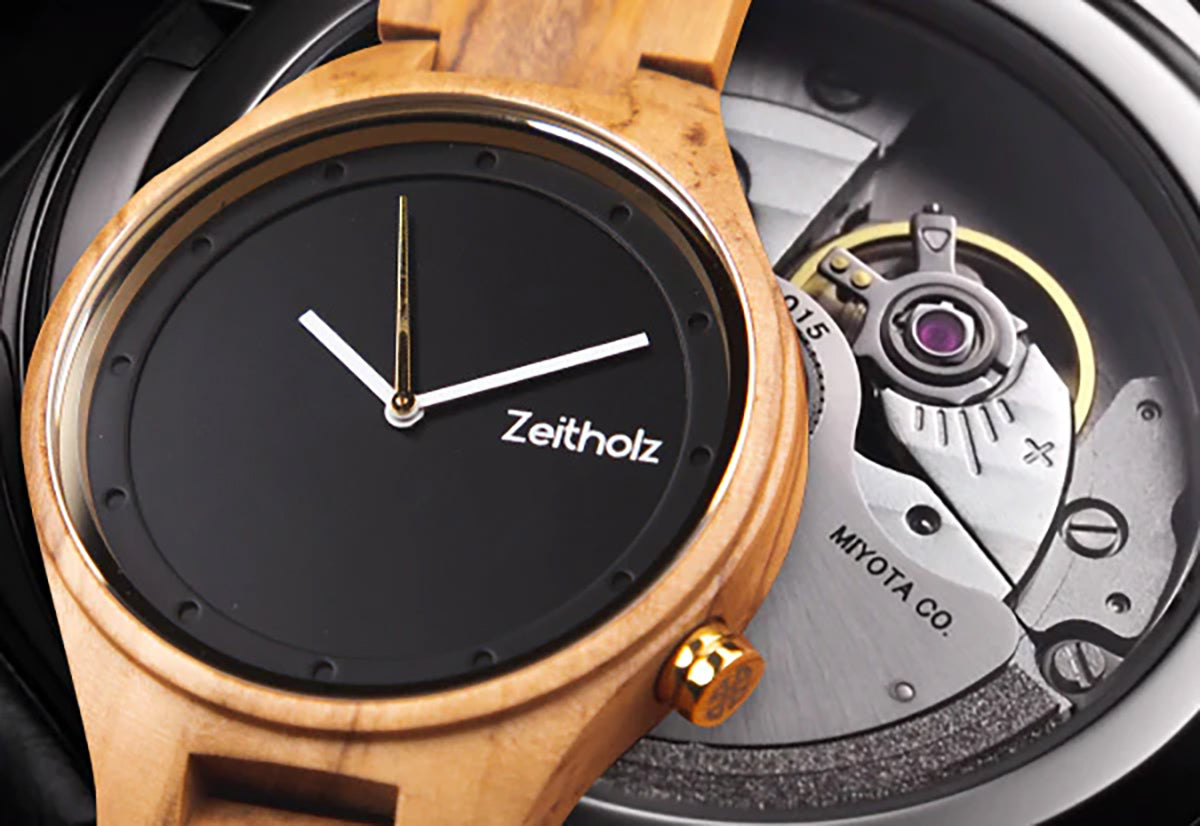Your Cart is Empty
THIS CHRISTMAS, GIFT SOMETHING TRULY UNIQUE 🎄
THIS CHRISTMAS, GIFT SOMETHING TRULY UNIQUE 🎄
THIS CHRISTMAS, GIFT SOMETHING TRULY UNIQUE 🎄
THIS CHRISTMAS, GIFT SOMETHING TRULY UNIQUE 🎄

May 21, 2024 4 min read
When buying a watch, the movement type is crucial. This guide explains the differences between quartz and automatic watches, helping you make the right choice.
The difference between quartz and automatic watches is how they work and how much care they need.
If you are looking for a simple and reliable solution, then a quartz movement is what you are looking for.
The rest of this article will explain in more detail the types of movements, give a brief history or watch movements and tell you their pros and cons. But if you were looking for a simple answer, we hope you got it already.
Now let’s delve deeper into the world of watch movements.

Watch movements have evolved significantly since their inception, reflecting advances in technology and engineering. A summary of the key developments in the industry would be:
This progression from mechanical to quartz movements separated the watch industry in a more traditional branch and a more innovative one.
The Swiss watchmakers were the example of the former while Japanese brands like Seiko, Citizen or Casio opt for the latter.
Quartz movements are also known as battery movements or battery operated movements, and that is just a big clue on how they work.
A quartz watch uses a battery to send an electrical signal through a piece of quartz, which vibrates at a precise frequency of 32,768 times per second. These vibrations are counted by the circuit and converted into a single pulse every second, driving the motor to move the watch hands at a steady rate.
Advantages of Quartz Watches

Solar-powered watches, like those in our Sonnenberg Collection, use a solar panel under the watch face to convert light into electricity that is then stored in a rechargeable battery.
This process reduces environmental impact by practically getting rid of the need for battery replacements, which was one of the biggest flaws of Quartz watches for us at Zeitholz.
Quartz watches are ideal for individuals who value precision and simplicity. They are particularly suited for everyday wear as well as for those who do not want to go through the routine maintenance that an automatic watch requires.
Mechanical watches are powered by a spring mechanism that moves the watch hands. They are completely mechanical, containing no electronic parts. How this spring is winded is what tells the difference between manual or automatic movements.
Automatic watches are valued for their craftsmanship and the heritage they represent. They feature visible, moving parts, showcasing their mechanical complexity and are linked to a long history of watchmaking innovation.
Automatic watches need to be worn regularly or placed in a watch winder to stay wound.
On top of that, they tend to need regular professional servicing every few years, to maintain accuracy and extend the watch's life. They should also be handled gently to prevent damage from shocks.
| Feature | Quartz Watches | Automatic Watches |
|---|---|---|
| Price | Generally less expensive | Typically more expensive |
| Accuracy | High accuracy; loses only a few seconds per month | Less accurate; can gain or lose several minutes per month |
| Maintenance | Low maintenance; battery changes needed every few years | Higher maintenance; regular winding and servicing needed |
| Craftsmanship | Functional and practical with modern technology | High craftsmanship; showcases mechanical complexity |
Choosing the right watch depends on several factors:
Both quartz and automatic watches offer unique benefits, so the best choice depends on your personal needs, preferences, and the value you place on the craftsmanship of watchmaking.
Consider how the watch will fit into your lifestyle, its maintenance, and upfront costs before making a purchase. Let this guide serve as a compass to guide you through your journey of selecting the perfect timepiece.

December 09, 2025 8 min read
Be the first to know about upcoming sales and special offers. Get a 10% discount coupon when you sign up!